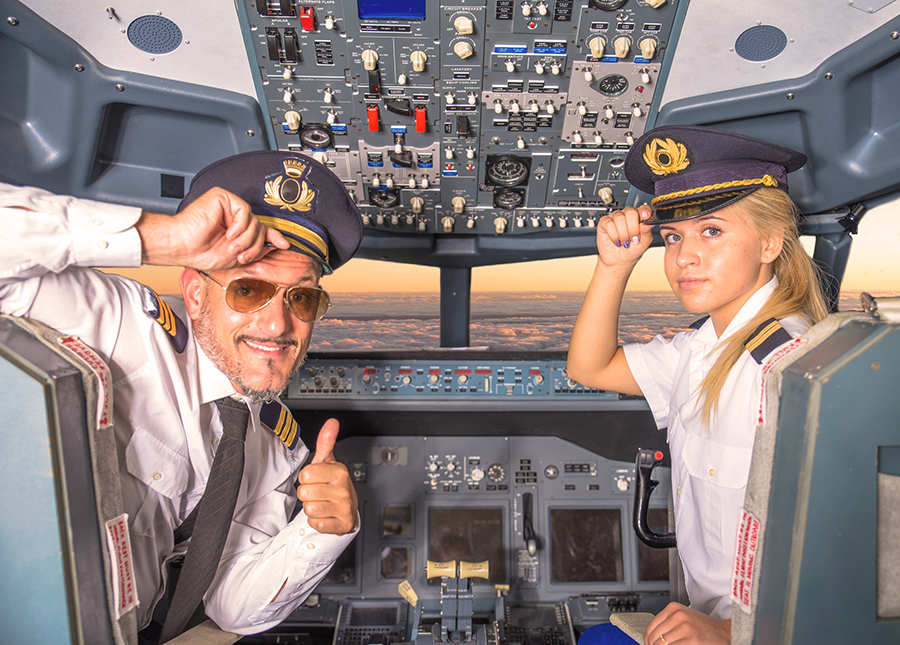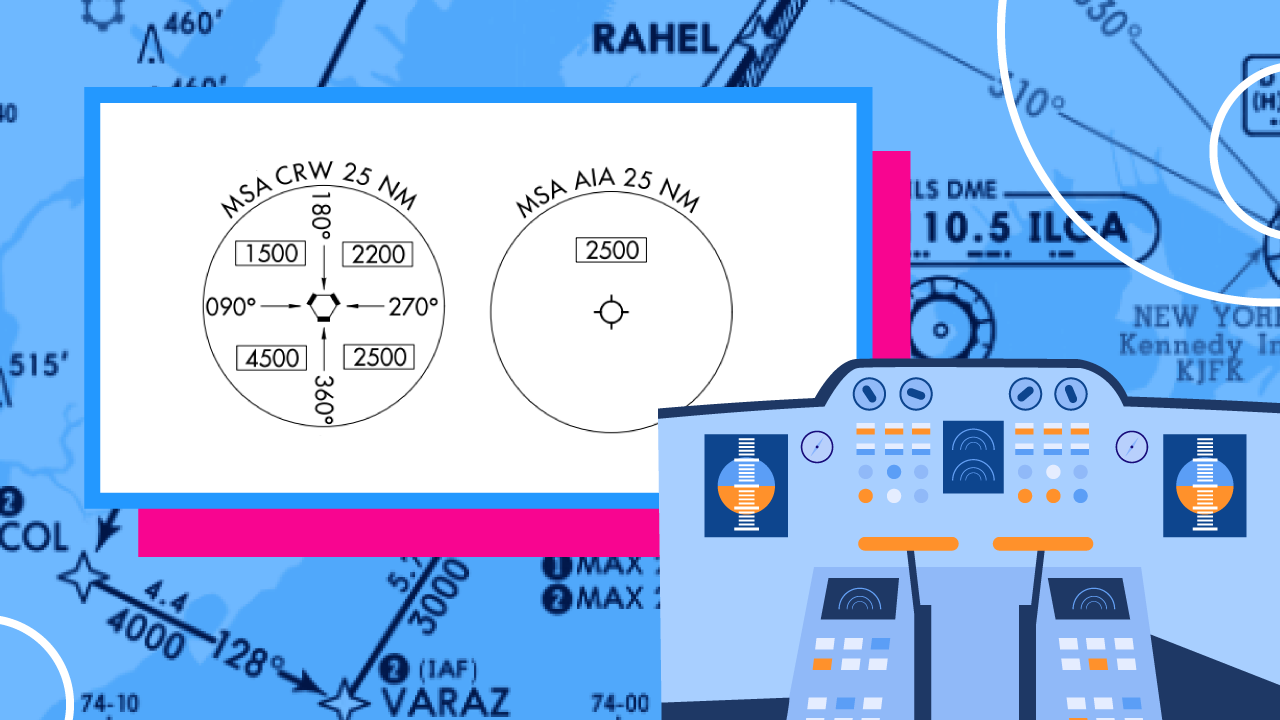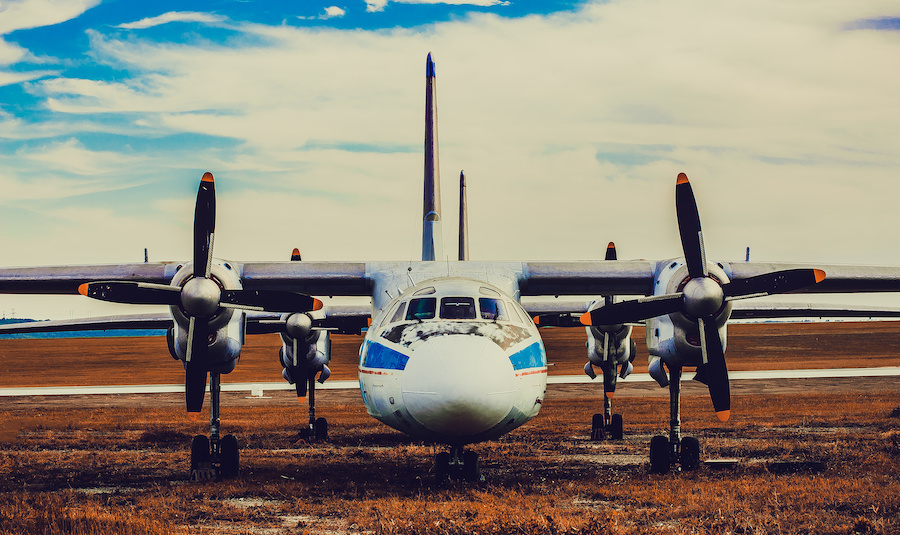When it comes to aviation in America, there are “the big three” companies and then there is everyone else. The pinnacle of the “big three” is Delta Airlines; followed by United and American Airlines.
Delta is the big one, though. They are well known for being one of the smoothest operations in the world. Using the standard hub and spoke model, Delta serves 275 destinations in 50 different countries.
In a world where airlines in America keep relaxing on things, Delta is recognized for ensuring the heritage of aviation, including continuing the traditional pilot hat as part of the uniform but pushing the envelope as far as social and environmental movements.
Previously, a pilot was easily distinguishable by the suit and tie with a hat. Now, many airlines have dropped the hat, a few even leaning toward relaxing on the jacket. So, you can spot a Delta pilot quickly by the pilot hat they continue to wear to this day.
There’s another reason Delta Pilots stand out in a crowd. Typically, you can spot a certain air of confidence that seems to radiate from airline pilots. Delta Pilots have stronger confidence. They carry themselves as true professionals that can handle any situation.
And there’s a reason for that.
Delta is an airline that is the creme de la creme. They are the best of the best. It’s a well-known fact that getting hired at Delta is more difficult than at any other airline. It’s because they will deny even the most qualified individual if they don’t have the right attitude.
It takes more than just a bunch of flight hours to become a Delta Airlines pilot. Delta asks for strong citizenship and quality humans to apply. They even recommend updating your application on their website regularly to show continued interest because they pretty much never pull an application as soon as it’s submitted.
Because the FAA has specific requirements for any pilot to get to the airline level, there are extra requirements Delta needs to help prove you’re the right candidate.
What are the tips and tricks to get in at this incredible airline?
Well, let’s dig – the research has been done and compiled for you here.
Basic Requirements for Consideration
Even though you can attain the required certificates sooner, Delta Airlines requires that pilots must be at least 23 years old.
Additionally, you must have a high school diploma or GED (or its equivalent) and must have a document that allows you to work in the United States and travel internationally.
That’s pretty much all the requirements you absolutely need for Delta. Which would be great and easy if there wasn’t also the FAA that has minimum requirements for pilots.
The FAA requires that any airline pilot in the United States have their Airline Transport Pilot add-on and the airplane instrument add-on to their Commercial Pilot Certificate. They also require a current First Class Medical certificate.
Those are standard for all airline jobs, though. As stated previously, Delta has high standards for getting hired, so there are a few extra requirements they ask for.
For starters, Delta asks that their pilots have a four-year degree. They don’t specify any particular field, but it’s extremely encouraged for their jobs.
Minimum flight time requirements are pretty standard too. They ask for a minimum of 1,500 hours of total flight time, 1,000 hours of fixed-wing turbine time, 250 hours of PIC (Pilot In Command) or SIC (Second In Command) as defined by the FAA’s 14 CFR 61.159(a)(5) airplane category.
Keep in mind, those are minimum requirements. That means it’s extremely unlikely to get hired if you only meet those. Typically, the pilots that get hired have 3,000 or more hours of total time.
Becoming a Pilot for Delta Airlines
The barrier to entry for airline pilots is pretty high. But when you’re trying to make it in at one of the biggest and best airlines in the world, it gets even more intense.
A lot of people will give up on the dream to be a Delta Airlines pilot because they get intimidated and just stop. Luckily, there are really three well-known routes to get people there.
There is the typical route of a flight school/aviation college-to-instructor-to-regional airline-to mainline-to Delta. Then there is the military route that cuts out the flight school and instructor requirements and pretty much just picks up as you get hired on as a regional pilot. The newest route is through Delta’s own flight school program they offer.
Typical Route
The most common way for people to get into aviation is through a typical flight school. There are two routes for it where you either get a fully customizable curriculum or you follow one that was created by the FAA.
Either way has the same requirements, so it really doesn’t matter how you get there.
A third option is a college or university that offers an aviation program to help teach you and guide you along the way. Usually, this comes with a degree at the end, so it makes it more favorable for the long term and more marketable to airlines down the line.
But after getting each certificate, you float into a season of just building more time. The first milestone is your Private Pilot Certificate which will eventually lead to a Commercial Pilot certificate.
After getting your Commercial Pilot Certificate, you can become a flight instructor. This is the most common job for pilots and often leads them to the airlines. It helps the pilot to fully internalize the mechanics of flight and makes them a much better pilot.
Once an instructor has been flying for a while, they will have built up enough time to start making their way to an actual airline job. There are a few occasions where someone will jump straight to a bigger airline. For the most part, though, they end up going to a regional carrier to build up a bunch of time.
Then when a certain time requirement is met, pilots will jump up to a bigger regional carrier to build time in a more applicable airplane. And after flying there to build time, you can finally get your foot in the door at Delta Airlines.
This is the most common route to becoming a full-fledged pilot at Delta.
Military Route
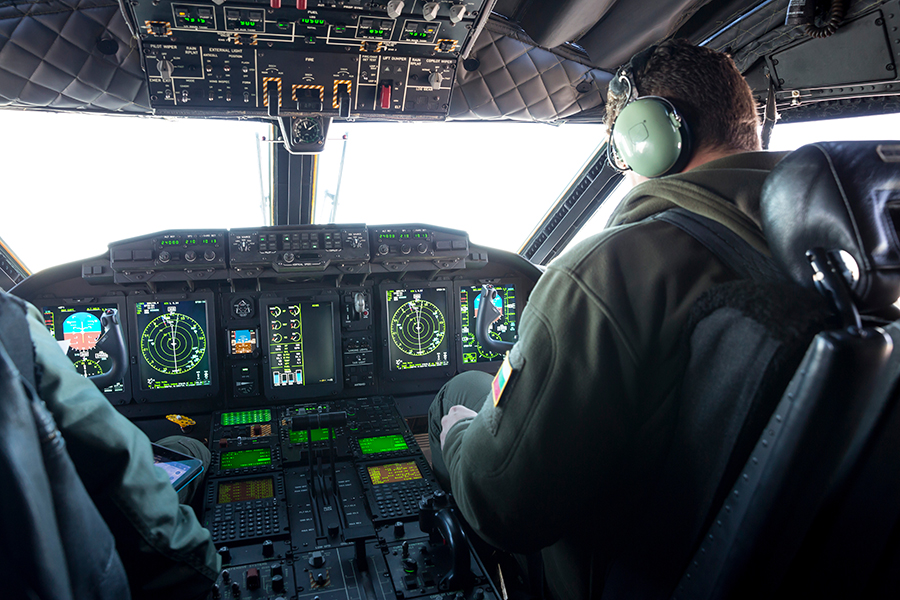
There’s another route to getting to the airlines that will help save you money, build lifelong relationships, and make an impact (while serving your country). That’s the military training path.
Joining the military is a big decision that shouldn’t be taken lightly. You don’t get to decide if it’s time for war or not, so this decision carries a lot of weight.
But if this is what you want to do, it will get you to the airlines.
The FAA requirements to get your license are lowered if you gain them through the military. It’s as though landing a fighter jet is a bit more difficult than an airliner, and the FAA knows that.
Bonus points if you’re landing it on a boat, as it makes the runway move up and down with the waves too.
After getting out of the military, there will still be hour minimums that the airlines require. If you’ve flown in the military for a few years, this likely won’t bother you. But sometimes you come out without the minimums for certain airlines. If that’s the case, then starting your career at a regional airline to help build up more time is the way to go.
Delta’s Propel Flight Academy
Since Delta is such a large airline, they have the resources to solve the major problem of a pilot shortage. Delta has the Propel Flight Academy, where they are able to offer a few different routes to help people achieve their dreams of becoming a Delta Airlines pilot.
The Propel Flight Academy is a joint program offered with Skyborne Airline Academy based out of Vero Beach, Florida. It has the exact curriculum to get someone from zero flight time all the way to the airline level.
With the Propel Flight Academy program, the curriculum is designed not only to prepare someone for airlines but the specific requirements of Delta Airlines. If anyone completes the program, they’re immediately offered a conditional job offer with a perfectly laid out pathway to Delta’s mainline flight decks.
The requirements are pretty much the same as any airline minus the certificates and flight time. Specifically, they are:
- No Pilot ratings (with the exception of being allowed in with your private pilot certificate)
- At least 18 years old
- A valid driver’s license
- Able to work in the U.S.
- Current passport or whatever travel documents you need
- Pass a drug test
- High school diploma, GED, or equivalent
- FAA 1st class medical certificate
- No felonies
- No DUIs or DWIs
- Read, write, and speak English
- Clean background check
- Relocate to Vero Beach for at least one year (or however long your training takes)
If you’re already planning on going to college or in college already, Delta has a similar option in partnership with specific universities. Basically, these are guaranteed to give you the option to either join up with one of Delta’s three Connection Carriers (the Wheels Up program) or fly military aircraft for the Air National Guard or Reserves.
Then there’s the third Propel Program option that’s offered to current Delta employees. This is an exclusive training option for Delta employees that have been employed for at least 24 months and already have at least a Private Pilot Certificate.
Delta also asks they have at least 100 total hours of flight time and a current Biennial Flight Review.
This program is just like the others by having a conditional job offer at the end of training. It’s an amazing program if you found Delta only to realize you want to be a pilot instead of an on-the-ground employee.
Time Building
All of these programs have one extremely crucial aspect that gets glossed over – The time between getting your Commercial Pilot Rating and getting your Airline Transport Pilot Rating.
This is a common issue when becoming an airline pilot. There’s a lull in training potential because there are a few ratings that are beneficial. But as airplanes get bigger, so does the price to fly them.
A lot of people even question the importance of building time. If you were good enough to pass the test, why do you need more hours?
Fair question. Easy answer.
Statistics have shown that higher flight time gives pilots more exposure to different scenarios. No two flights are ever the exact same. The more flight time pilots have, the more likely they are to know how to handle different situations.
On top of that, more time spent flying equals more time learning the aircraft. That, as you would expect, lends itself to safer pilots.
But the main point of this section is to tell you the ways you can build time.
The most common is becoming a flight instructor. By teaching other people to fly, you become a better pilot. While you’re learning the ins and outs of the aircraft, you’re building time. Becoming a flight instructor is a great way to solidify your skills while building flight time.
But teaching isn’t for everyone. For other folks, a better option may involve survey flying for oil companies. If you get your commercial certificate, then you might be able to jump straight into charter flying.
That’s not even mentioning the amount of time building you can do simply by being in the military. If you don’t want direct military service, then there’s also the possibility of joining a Civil Air Patrol unit to help train military pilots.
As long as you get that time up, you can make it to your airline goal. It’s possible. You just have to persevere and find the best route for you.
Interview Process
When it comes to the actual hiring process, there are eight steps laid out on Delta’s website. But only the first four are the ones that are part of the actual interview process. After that, you enter the training, which you must pass, or you lose out on your position; more on that later.
The first part is the initial application process. All applications must be submitted through Airline Apps. Delta will pick from the bunch.
It may be quite some time before Delta actually snags your application, so they recommend updating it every month or so.
It’s also encouraged (and this goes for flying at every airline) to do your best to network and meet the right people. Keep your eyes on various social media pages to see any potential meet and greets the airline may be hosting. These are perfect places to get noticed to ensure your application is pulled.
Once the application gets pulled, it will be reviewed by two separate members of the Application Review Team. This helps keep things unbiased and shows you look good to multiple people and not just one person you happen to know.
Finally comes the actual interview.
When doing any sort of interview, the number one thing airlines are looking for is a record of safety. If you are a safe pilot and can prove it by knowing the aircraft and how to respond to different scenarios, you’ll be fine.
Additionally, this is where they try to make sure you’re not a totally crazy person. When there are only two people on the flight deck, it’s important to make sure they’re hiring people that are easy to get along with. The last place you need any sort of contention is in the flight deck. People’s safety and lives are at stake, so it’s not something that’s taken lightly.
There are three steps to the interview process. It begins with an online assessment to get a feel for the applicant. Then it will move into a panel interview where multiple people will ask questions and get to know you a little better. Finally, there is a final evaluation. At the end of the process, the ideal, though not guaranteed, outcome is a Conditional Job Offer.
It’s called a Conditional Job Offer, or CJO because aviation loves acronyms. To make your CJO an actual job offer, you need to successfully pass the training and the fourth step of the interview: a Pre-Employment Screening.
The Pre-Employment Screening consists of a background check, drug test, and reference verification. So, keep your record clean, don’t do drugs, and don’t lie and fake your references to make sure you can become a Delta Airlines Pilot.
Indoc and Training
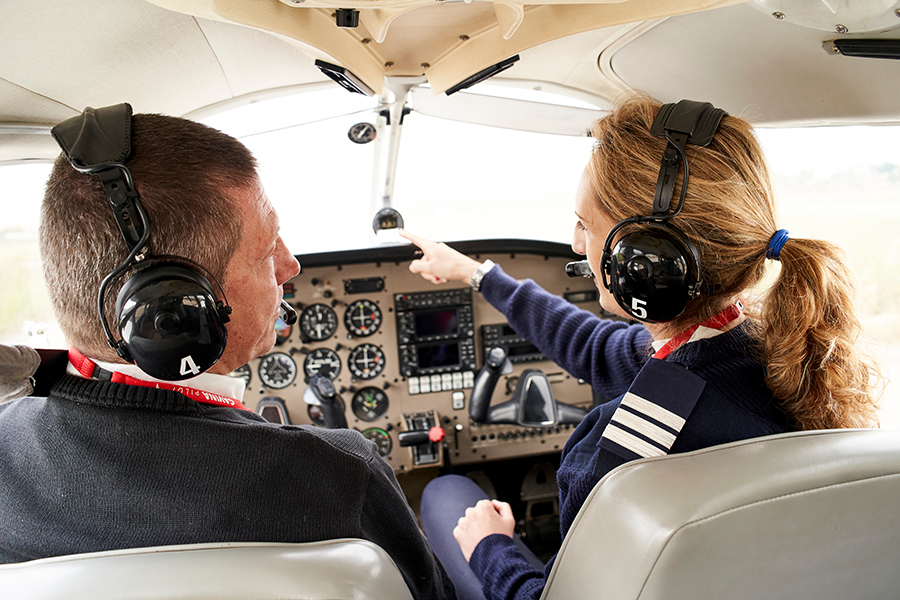
Congrats, you’re a Delta Pilot!
Or at least, you’re going to be one.
In that case, it’s time to start your first step to becoming a Delta Airlines Pilot. This is called the Delta Indoctrination. It’s the first two weeks of your journey and is all about laying the foundation.
Indoc is where you get the operational policies and have an introduction to the overall Delta culture. It’s one of the biggest and consistently best-performing airlines in the world. For that reason, they have to make sure they’re hiring the best people.
There’s a lot of info dumping and paperwork during this part, but it’s still necessary as it establishes the appropriate mindset for pilots to embody at Delta.
After this is one of the more emotional parts of getting into aviation; the Wing Ceremony.
Getting your wings is the equivalent of graduating. When you graduate high school or college, you get your diploma. When you graduate from your aviation school, you get your wings.
Instead of your principal or teacher handing you your diploma, your teacher or someone important to you will pin your wings to your lapel.
Next up, is the actual training.
For Delta’s training, there are two aspects to how they train their pilots. It starts with hitting the FAA requirements with basic training. This is a lot of theory and ground training for this portion. There’s some simulator training, but it’s not the deepest part.
After the basics, you will enter Delta’s Advanced Qualification Program (AQP – another acronym!).
During the AQP portion, you will get to experience some of the highest quality, state-of-the-art training devices. There’s additional ground training, but the real tests come with actually working through the scenarios of the simulators.
Since Delta has some of the best trainers in all of aviation, they will be able to bring anyone up to the official Delta level. And after you meet their standard, you get to do the real test with your Initial Operating Experience (IOE – how many acronyms are we on now?).
This is the final test. There are big tests throughout the training, but this is the time you actually head out to fly a trip. The only difference between this and regular working trips is that you have a highly skilled pilot following you around to make sure you do everything correctly.
But this isn’t too terrible because it’s exactly what you’ve been studying the whole time. After you successfully finish this trip, you get to go out there and live your life as a Delta Pilot. You get to build time till you slowly climb your way up the ladder to eventually become a senior Captain that can work any trip you want.
The Recap
There are multiple routes to get to the end goal.
You can work your way up the ladder as an employee.
Then there’s the route of going to college for aviation and coupling that with the Delta Propel Program.
Or you can just go straight for the goal by moving out to Vero Beach to begin your aviation career with Delta.
Whether you want to fly for Delta because they’re your all-time favorite airline, you’re from Atlanta (Delta’s headquarters), or they have a specific route or airplane that you really want to fly, you can get there.
Flight training, in general, can be stressful. Sometimes you may question your decision to become a pilot. That’s okay; it’s normal. However, it’s important to stay positive and keep your eyes on the prize.
A helpful tip is to surround yourself with supportive people and others that also want to make it to Delta. That will motivate you more and help you cross the big finish line. Just stay the course.
You can do it!
